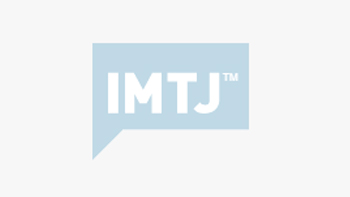There are signs that inbound medical tourism to the USA is on the rise and that employers are looking at whether domestic medical tourism can save them more money for less hassle than overseas medical tourism. Andrew Jacono of the New York Center for Facial Plastic and Laser Surgery says there has been a recent upswing in patients from around the world traveling to New York City for cosmetic surgery, fueled by the seemingly flawless features of US film stars.
There are signs that inbound medical tourism to the USA is on the rise and that employers are looking at whether domestic medical tourism can save them more money for less hassle than overseas medical tourism.
Andrew Jacono of the New York Center for Facial Plastic and Laser Surgery says there has been a recent upswing in patients from around the world traveling to New York City for cosmetic surgery, fueled by the seemingly flawless features of US film stars. “In one recent month alone I had patients from Romania, Turkey, Singapore, France, Italy and Russia in my practice.”
Rhinoplasty, facelifts and eyelid lifts are among the most popular requests, with the overall trend leaning toward achieving a more youthful appearance while preserving natural ethnic characteristics.
Even with the higher cost of cosmetic procedures in the USA compared to Thailand, Singapore, Mexico and India, the USA remains a cosmetic surgery draw for those who seek the highest quality. Luxury accommodation is a key reason why cosmetic surgery tourists go to New York City as packages can include top hotels, world-renowned restaurants, limousine transport, and entertainment options.
While there is much talk about US employers saving money by overseas medical tourism or domestic medical tourism, there is very little action and a concern from insurers and employers that any money saved is more than offset by hassles of administration and having to sell the idea to employees who are only used to very local treatment.
One agency that claims it has a solution is EmployerDirect. It argues that the answer is bringing medical tourism back to the United States with quality surgeons and bundled case rates for orthopedic, spine, cardiac, and many general surgeries.
EmployerDirect has launched SurgeryPlus, a supplemental medical benefit that reduces the costs of planned surgery by bundling case rates at high-quality providers with sites of excellence regionally dispersed throughout the USA. All costs are negotiated before surgery using top surgeons by specialty. It can be bolted on to any existing self-funded medical plan with bundled case rates already in place for procedures such as: orthopedic, spine, cardiovascular, bariatric, general surgery, carpel tunnel surgeries, and other minor outpatient procedures including colonoscopy, endoscopy, arthroscopy. Each procedure is implemented by a care coordinator, who acts as a personal assistant for each member from the time of their provider consultation, all the way through post-operative follow-up. Care coordinators help select a SurgeryPlus provider, schedule appointments, aid in transferring medical records, manage travel logistics for patients when necessary, and supervise a member satisfaction survey.
Thomas Johnston of EmployerDirect says, “We are bringing medical tourism back to the United States by offering patients access to high quality surgeons potentially within 30 to 60 miles from their home. We can also offer 30 to 50 % savings to their medical plans when compared to traditional insurance. SurgeryPlus is an especially powerful solution for self-funded employers introducing consumer-driven health plans to their employees. It provides them with a clear choice for quality surgeons close to home, at a lower cost.”
The problem for the company and other promoters of domestic medical tourism is that after years of hype about how much money they could save on overseas medical tourism, employers and insurers are justifiably nervous about the cost saving and quality of medical tourism services. Almost all companies who attempted to sell overseas medical tourism found resistance from employees, managers and in-house human resources and insurance teams; so are nervous about whether the hassle of selling a non-local concept internally is worth saving a few dollars.







 ©2024 All rights reserved LaingBuisson
©2024 All rights reserved LaingBuisson 


